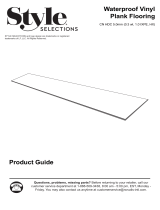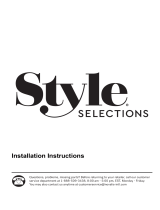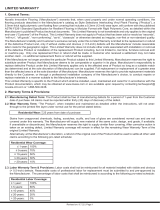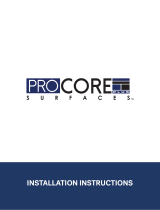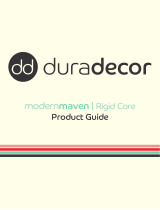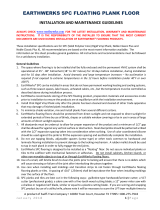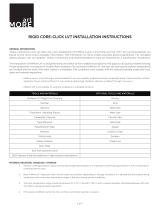
Revised on: 9.7.22 | Page 3
SUBSTRATE PREPARATION
Unsuitable Substrates:
These include but are not limited to: any oating or loose oor coverings, hardwood installed directly over concrete,
carpet, cushion vinyl, rubber, cork, foam, asphalt tile, any additional acoustic underlayment, any substrate with
visible mold, mildew, or fungi and any substrate in wet areas, such as inside showers and saunas. Do not install
directly over any adhesive or adhesive residue of any kind. Do not install directly over radiant heating elements/pipes
or in recreation vehicles, campers or boats.
Other Suboors/Substrates:
Installing over existing resilient vinyl ooring is not recommended. However, it may be possible over some materials,
such as hardwood ooring, VCT, VAT, quartz tile, solid vinyl tile, sheet vinyl or linoleum, as well as existing hard
surface ooring substrates, such as terrazzo, porcelain or ceramic tile. Ensure existing ooring is a single layer and
is clean, dry, sound, solid and well adhered. All loose material must be removed and repaired or replaced. All grout
lines and wide seams greater than 1/4-in. in width and/or depth, as well as any signicant substrate imperfections,
must be lled and troweled ush with a suitable cementitious patch.
Note: Existing hardwood oor coverings will swell when exposed to moisture - vinyl oor covering may restrict the
movement of moisture in hardwood, which may result in ooring failure, especially when installed on or below grade.
Some hardwood oor coverings may also discolor vinyl oor covering, which is excluded from warranty coverage.
Electing to install over any existing oor covering releases the manufacturer from any responsibility regarding the
suitability and continued performance of the product, including any resulting eect on the new oor covering.
Radiant Heating Substrates:
When installing oor covering over a substrate that contains a radiant heating system, ensure the radiant heat does
not directly contact the oor covering and is set at the correct “in-service” temperature for 48-hours prior, during and
after the installation. The radiant heat may be gradually increased or decreased to maintain the correct “in-service”
site conditions.
Note: Ensure the temperature of the radiant heating system does not exceed 85°F (29°C).
Additional Acoustic Underlayments:
Additional acoustic underlayments are not recommended or required. However, should one be used, ensure a
polycarbonate chair mat is used in all rolling chair areas. Do not use additional acoustic underlayments in any
commercial areas.
Wet Area Guidelines:
Some suboors and substrates, such as plywood, may be sensitive to and damaged or deformed by topical liquids,
such as water, pet urine and spills. While StainMaster Pet Protect Interlocking Flooring is a waterproof product,
water-sensitive suboors may require additional protection to prevent water exposure. When installing oor covering
in wet areas, ensure that bathmats or similar are used where appropriate to decrease the amount of water that can
collect on the surface. Any and all spills should be cleaned up immediately after discovering them and within 8 hours.
Suboor atness is critical to preventing water migration through seams that may ex or peak due to foot trac and
suboor deection - be sure to check atness and make all necessary adjustments prior to installing.
Water-sensitive substrate must have a ≥ 6-mil thick polyethylene (PE) sheet (available at Lowe’s) installed over the
entire area and extend at least 2-in. up the walls. All seams must be overlapped and taped according to the product
instructions. In addition, the area must be separated from all other rooms using a suitable water-resistant t-molding.
Following ooring installation, the plastic sheet must be trimmed ush with the surface of the suboor. Prior to
installing wall-base or molding, the required perimeter expansion gap must be lled with a 100% silicone caulk,
including the wet area side of all t-moldings. Additionally, all door jambs, plumbing and vertical surfaces that won’t
have wall-base or molding installed must be sealed with 100% silicone caulk. Once the entire perimeter has been
lled or sealed, water-resistant wall-base, moldings or other accessories may be installed. Apply a bead of silicone
caulk to the parts of the wall-base or moldings that will make contact with the surface of the ooring. Ensure all wall
base and moldings are attached to the suboor, wall or wall-base without compression, to allow movement and
cleanup any remaining silicone immediately. Do not anchor wall-base or moldings into or through the oor covering.






